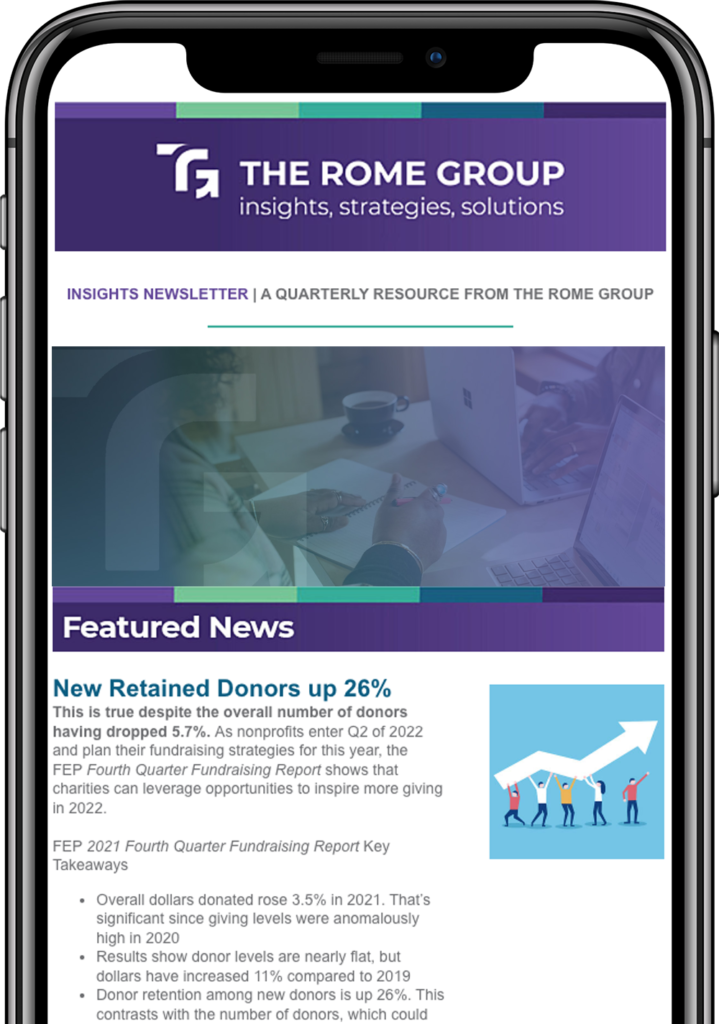By Sarah Plumb, Consultant for Grant Writing, Communications, Special Projects
The arrival of the yearbook was my second-favorite part of the end of the school year (the first was, obviously, the end of the school year). I couldn’t wait to see which candid photos the yearbook staff had chosen. I’d excitedly peruse the pages upon pages of club pictures – never not surprised by what the school had to offer and by which of my friends had ended up in, say, Astronomy Club. And I loved the blank pages at the back that I knew would soon be filled with messages and well-wishes from friends, teachers, and acquaintances – people leaving their personal marks on the object that represented the culmination of the last year of my life.
You might want to consider your annual report as your organization’s yearbook. It’s an opportunity for you to showcase what you’ve accomplished and experienced over the past 12 months – no singular mold, no character limits, and no need to color within the lines. Your annual report is an opportunity for you to show off and to expand your brand. Best practices in annual reporting include financial statements, a letter from leadership (Board Chair, Executive Director, CEO), mission statement, organizational accomplishments, a donor list, etc. But how you showcase that information is entirely up to you.
Best practices in annual reporting include financial statements, a letter from leadership (Board Chair, Executive Director, CEO), mission statement, organizational accomplishments, a donor list, etc. But how you showcase that information is entirely up to you.
A few tips to consider as you work your way through the process:
- Tell your story in a logical and/or sequential way that is specific to who you are and the work that you do. Imagine how confusing it would be if the 10th graders’ pictures were first, then the 12th graders’, and then the sports teams, and then 9th grade, etc. It doesn’t follow. However you choose to organize your report (and creativity is encouraged!), it needs to make sense.
- If you’re an animal rescue organization, you could consider telling your story
seasonally.- In the summer, these are the things that we focus on, and what we
accomplished (i.e. “We were thrilled to receive a huge donation of box
fans from Acme Fan Co., to help keep our animals cool during
extraordinarily hot summer days!”) - In the fall, maybe you saw an influx of homeless animals during these
months and you did x, y, and z to accommodate them. - Perhaps winter saw the adoption of a beloved, long-term resident: “Our
longest-residing mutt, Fido, went home to a loving family.” - In the spring: “We held our most successful fundraiser ever and raised
$XXXXX in support of our mission!” You see where I’m going with this.
- In the summer, these are the things that we focus on, and what we
- Perhaps your organization works to provide health care access to those without. Your report could be organized as a journey through the healthcare system of a fictional patient. In this scenario, you could use the pages to describe what navigating the system is like at each point and showcase the things your organization does to help individuals, highlighting specific wins along the way.
- If you’re an animal rescue organization, you could consider telling your story
- Pictures
- Whenever possible, use high-quality photos to tell your story. In most cases,
donors aren’t on the ground with your organization so it’s up to you to show them your work – illustrated through photographs and relevant captions. If I’m telling the story of Fido’s adoption after 15 months at the animal shelter, I should include a high-resolution photo of Fido, ideally with his new owners.- While we’re on the subject of photos, if you don’t have one already, develop a simple, practical way of storing photos online. Collect them throughout the year, make it easy for staff and volunteers in your organization to share them with you, and do your best to include identifying characteristics for each photo. Your future self will thank you.
- Whenever possible, use high-quality photos to tell your story. In most cases,
- Quotes: personalize, personalize, personalize
- Taking it back to my mid-1990s high school experience, consider quotes in your annual report to be the paint pen monogram on your Caboodles. (How many of you did I lose with that reference?)
- Quotes about experiences with your organization (from staff, volunteers, participants, donors, community partners) are specific to you and your work. They’re meaningful and can help to validate a donor’s belief in the value of the work that you do. A quote from Fido’s grateful new owners is unique to your organization – it is a reference to your organization alone and that’s pretty powerful.
- Taking it back to my mid-1990s high school experience, consider quotes in your annual report to be the paint pen monogram on your Caboodles. (How many of you did I lose with that reference?)
- Stats
- It’s important to include relevant statistics and present them in a visually appealing way.
- Canva (even the free version) offers lots of options for presenting information. Think about what you’re hoping to get across and then consider how you might best jazz it up.
- For example, rather than presenting bullet points about how many dogs, cats, birds, and llamas were helped by my animal rescue organization, I might create a graph with dog, cat, bird, and llama graphics to better illustrate my point. Fun fact: pictures are dually encoded, meaning that if we see a picture we code that image as a picture and also as the word associated with that picture. But words are only encoded as words. If we want readers to remember the good things we did, images can help!
- It’s important to include relevant statistics and present them in a visually appealing way.
- Don’t take 3 paragraphs to say something that could be said in a few bullets or short sentences. Yes, I recognize the hypocrisy in this statement as I’m on my 25th paragraph here, but the attention of your audience is fleeting. Be succinct!
- The Donor List
- The donor list is not unlike the autograph pages in my high school yearbook. These are the people who have added meaning and value to your organization over the past year. The donor list is a visual representation of the mark they’ve left on your organization and it’s imperative that you double/triple/quadruple check your list. There’s nothing more deflating as a donor than searching for your name, only to find that it’s been misspelled, categorized incorrectly, or omitted all-together.
- Consider finding ways to identify long-time donors in the list as well as first-time donors. Never underestimate the value of an endearing little asterisk.
- You are your most reliable audience
- Think about what you’d like to see/read and let that guide you. If the finished product isn’t something you’d be interested in reading, how can you expect your audience to dig in?
As best you can, enjoy the process of putting together your AR. It’s a chance for you to reflect on your hard work over the past year and to create a comprehensive, enduring testament to the importance of your work in the community.
Sarah Plumb Bio
“I am and always have been a storyteller and I believe there’s a particular magic in St. Louis’s nonprofit community. I love learning from those who know their work best and using my knowledge and experience to craft compelling narratives and increase brand awareness.”
Sarah’s role at The Rome Group includes grant writing, communications, data development and special projects. Sarah has two decades of experience in communications and development with a specific focus on grant writing and organizational brand management. With a background in rhetorical theory, Sarah approaches her work with a keen understanding of the power of language to create meaning and catalyze change.
Most recently Sarah served as Director of Development & Communication at College Bound, where she was responsible for fundraising strategy, pipeline and process management, external relations, and internal and external communications.
Prior to her work at College Bound, Sarah served as a development consultant to a variety of area nonprofits, led development at Girls on the Run St. Louis, and served as VA Governor Tim Kaine’s Director of External Relations.
Sarah holds a B.A. and M.A. in Communications with a concentration in Rhetoric from the University of North Carolina at Chapel Hill.







